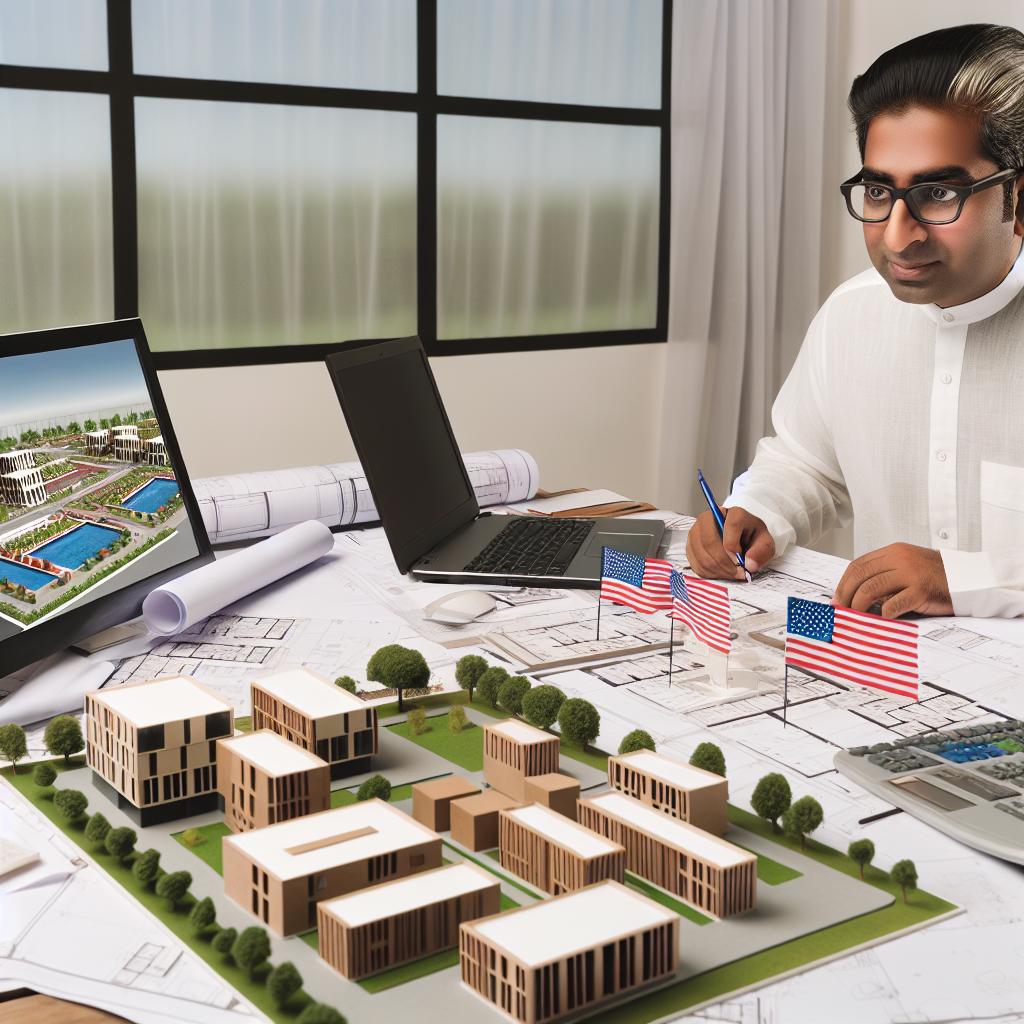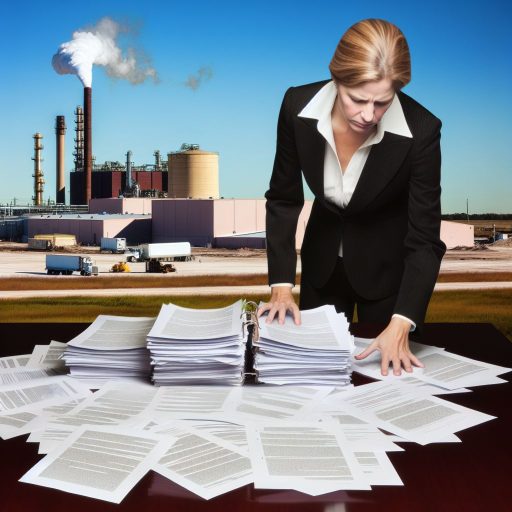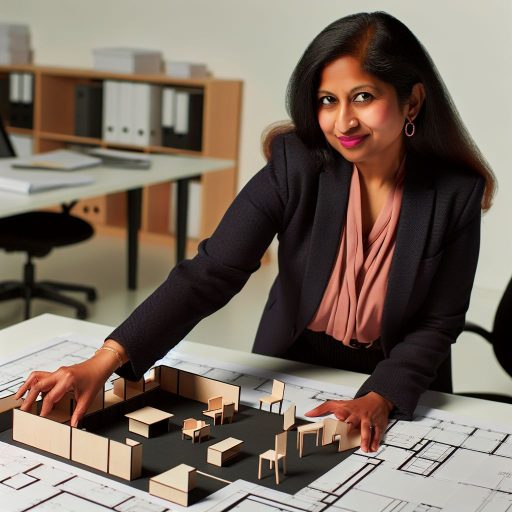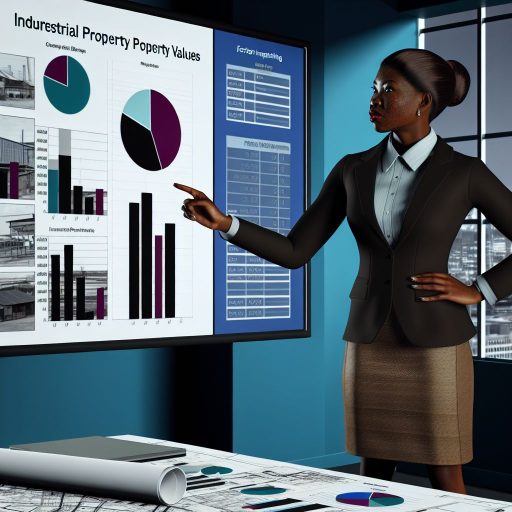Introduction to Mixed-Use Developments and Their Rise in Popularity
Mixed-use developments blend residential, commercial, and recreational spaces in one location.
They have gained significant popularity in urban areas over the past decade.
As cities grow and evolve, the demand for diverse spaces increases.
These developments encourage a more vibrant community atmosphere.
Moreover, they help reduce urban sprawl by making use of existing spaces.
Benefits of Mixed-Use Developments
One primary benefit is the convenience they offer residents and visitors.
Shops, cafes, and offices reside within walking distance of home.
This promotes a pedestrian-friendly environment, reducing reliance on cars.
Furthermore, mixed-use developments foster community engagement.
Residents can attend events or socialize with neighbors nearby.
Adapting to Changing Preferences
Consumer preferences have shifted toward experiences rather than products.
Developers have responded by creating spaces that prioritize lifestyle and entertainment.
This includes parks, gyms, and entertainment venues that attract people.
Such amenities enhance the overall appeal of mixed-use developments.
Environmental Considerations
Mixed-use developments can also contribute to sustainability efforts.
By consolidating spaces, they reduce the carbon footprint of transportation.
Additionally, they encourage the use of public transport and cycling.
Green building practices further enhance their environmental benefits.
Future Trends in Mixed-Use Developments
The future of mixed-use developments looks promising as urbanization continues.
Smart technology integration will make these spaces more efficient.
Moreover, the focus on community health and wellness will grow stronger.
Developers will likely prioritize green spaces and outdoor living areas.
As a result, mixed-use developments may become the standard for future projects.
Key Benefits of Mixed-Use Developments for Urban Environments
Enhanced Community Interaction
Mixed-use developments foster a sense of community among residents and businesses.
These spaces encourage social interactions, leading to more vibrant neighborhoods.
Moreover, they break down barriers between work, leisure, and home life.
Increased Economic Opportunities
These developments attract diverse businesses and services.
They often lead to job creation and increased consumer spending.
This synergy boosts local economies, benefiting landlords and tenants alike.
Improved Accessibility and Transportation
Mixed-use developments often feature convenient access to public transit.
They reduce dependence on cars, which lowers traffic congestion.
Furthermore, they provide pedestrian-friendly environments for local residents.
Higher Property Value
Mixing residential and commercial spaces increases property demand.
This trend often results in higher property values over time.
Additionally, these developments may qualify for various tax incentives.
Environmental Sustainability
Mixed-use developments promote sustainable urban planning practices.
They often include green spaces and energy-efficient designs.
Thus, they reduce urban sprawl and lower carbon footprints.
Enhanced Lifestyle Choices
Residents enjoy greater flexibility in their daily lives.
On-site amenities provide convenience and save time.
This lifestyle attracts a wide range of demographics, including families and young professionals.
Economic Advantages: How Mixed-Use Projects Boost Local Economies
Increased Foot Traffic
Mixed-use developments attract more visitors to the area.
This increase in foot traffic benefits local businesses.
Properties that combine residential and commercial spaces thrive.
Consequently, businesses experience higher sales volumes.
This trend creates a vibrant community atmosphere.
Diverse Revenue Streams
Mixed-use projects generate various revenue sources.
Commercial tenants contribute significantly to local taxes.
Residential units provide stable, ongoing income.
This mix enhances the overall economic resilience of the community.
Job Creation
Such developments lead to job opportunities in multiple sectors.
New businesses require staff, increasing local employment rates.
Furthermore, construction jobs emerge during the building phase.
This growth positively impacts the local workforce.
Community Development
Mixed-use projects foster community engagement and development.
They often include public spaces for social interactions.
These areas encourage cultural activities and events.
As a result, neighborhoods become more cohesive and inclusive.
Environmental Sustainability
These developments often prioritize sustainable design principles.
They reduce urban sprawl and promote higher density living.
Additionally, they enhance walkability and public transit options.
This approach lessens dependency on cars, benefiting the environment.
Shorter Commutes
Residents enjoy the convenience of having everyday services nearby.
This proximity decreases commute times significantly.
As a result, individuals can spend more time on personal pursuits.
Moreover, less time spent commuting reduces stress levels.
Increased Property Values
Mixed-use developments often lead to higher property values.
Investors recognize their potential for long-term returns.
Rising demand for these properties enhances real estate markets.
This trend positively affects homeowners and local governments.
You Might Also Like: Selecting The Right Office Space Lease Type For Your Unique Business Needs
Sustainability and Mixed-Use Developments: A Path Towards Greener Cities
Introduction to Mixed-Use Developments
Mixed-use developments combine residential, commercial, and recreational spaces.
They create vibrant communities that foster interaction and connectivity.
These developments focus on sustainability and efficient land usage.
Benefits of Mixed-Use Developments
One major benefit is reduced carbon emissions.
Mixed-use developments encourage walking, biking, and public transportation.
Additionally, they minimize the need for long commutes.
Enhancing Urban Sustainability
Incorporating green spaces is essential in mixed-use designs.
Green roofs and community gardens improve air quality.
They also provide habitats for local wildlife.
Efficient Resource Management
These developments promote more efficient resource management.
Shared resources reduce overall consumption across the community.
They often utilize sustainable building practices that conserve energy.
Encouraging Local Economies
Mixed-use developments support local businesses and economies.
Residents with easy access to shopping and services spend locally.
This enhances economic activity while reducing transportation emissions.
Case Studies
Several cities exemplify the success of mixed-use developments.
Portland, Oregon, is known for its vibrant mixed-use neighborhoods.
These areas promote walkability and community engagement.
Another example is the Seaport District in Boston.
It integrates residential properties with shops, parks, and offices.
This approach has revitalized the urban landscape while enhancing sustainability.
Implications of Mixed-Use Developments
Mixed-use developments foster sustainable urban growth.
They create livable environments that meet the needs of modern society.
As cities evolve, mixed-use models will play a crucial role.
Delve into the Subject: Maximizing ROI Through Effective Office Space Upgrades And Renovations
The Role of Mixed-Use Developments in Creating Vibrant Communities
Enhancing Community Engagement
Mixed-use developments create spaces for people to connect.
These environments encourage social interactions among residents and business owners.
Furthermore, they often host community events, fostering a sense of belonging.
Promoting Local Economy
Mixed-use developments boost the local economy significantly.
They attract diverse businesses, which creates job opportunities.
Additionally, a variety of services and shops keep money circulating within the community.
Improving Accessibility
These developments enhance accessibility in urban areas.
Residents can easily walk or bike to essential services and amenities.
Consequently, this reduces reliance on cars, leading to less traffic congestion.
Increasing Housing Options
Mixed-use developments offer diverse housing solutions.
They provide affordable options in desirable locations.
This diversity caters to various demographics, enhancing community inclusivity.
Contributing to Sustainability
Mixed-use developments promote sustainable living practices.
By integrating residential and commercial spaces, they reduce urban sprawl.
In turn, this fosters a more efficient use of resources.
Moreover, they often feature green spaces, supporting environmental health.
Explore Further: The Role Of Technology In Transforming Industrial Property Markets
Challenges and Considerations for Developers in Mixed-Use Projects
Site Selection and Regulatory Approval
Choosing the right site is crucial for mixed-use developments.
Developers must consider local zoning laws and regulations.
Building codes can vary greatly, affecting project feasibility.
Additionally, neighborhoods may have specific development restrictions.
This complexity requires thorough research and planning.
Financial Viability
Ensuring financial viability is a top concern for developers.
Mixed-use projects often require significant initial investment.
Funding sources must align with project goals for success.
Developers should project future revenue streams carefully.
Market analysis is essential to gauge demand across property types.
Design and Construction Challenges
Designing for multiple uses can present unique challenges.
Space planning must accommodate residential, commercial, and public areas.
Effective design enhances functionality while maintaining aesthetics.
Moreover, construction coordination can be complex among different contractors.
Addressing these challenges improves the final product’s quality.
Community Engagement
Engaging the community is vital for mixed-use developments.
Developers must listen to local residents and their needs.
Community input helps shape a project that fits the area.
Transparent dialogue can build trust and minimize opposition.
This collaboration fosters a sense of ownership among residents.
Balancing Diverse Functions
Balancing various functions in a mixed-use project is challenging.
Each use must complement the others to enhance synergy.
Common areas play a key role in promoting interaction.
Developers should also consider the impact of noise and traffic.
Thoughtful design can mitigate potential conflicts among uses.
Uncover the Details: How To Assess Office Building Amenities For Long-Term Investment Value

Case Studies of Successful Mixed-Use Developments in Major US Cities
The High Line in New York City
The High Line is a remarkable example of innovative urban design.
This elevated park transformed an old rail line into a vibrant public space.
It features gardens, art installations, and stunning views of the city.
Moreover, it has stimulated significant economic development in the surrounding areas.
Local businesses have thrived due to increased foot traffic.
This development has successfully integrated residential, commercial, and recreational spaces.
Pioneer Square in Seattle
Pioneer Square showcases the benefits of mixed-use development in Seattle.
This historic district features a variety of shops, restaurants, and living spaces.
The 5,000-square-foot public plaza serves as a community hub.
Furthermore, it regularly hosts events and activities, enhancing community engagement.
The blend of different uses has revitalized the area and attracted new residents.
Overall, Pioneer Square exemplifies how mixed-use developments can enhance urban life.
The Mercado District in Tucson
The Mercado District is a shining star in Tucson’s urban landscape.
This development integrates residential units, shopping areas, and public spaces.
It incorporates local culture through architecture and community spaces.
The farmers’ market attracts visitors every week, supporting local businesses.
Residents enjoy convenient access to shops and services within walking distance.
This project emphasizes sustainability and community-driven design.
The Wharf in Washington D.C.
The Wharf is a prime example of modern mixed-use development.
This waterfront community connects restaurants, homes, and entertainment venues.
It offers stunning views of the Potomac River.
Additionally, The Wharf promotes walkability and local transit options.
Regular events and performances create a lively atmosphere.
This vibrant district fosters a sense of community among its residents and visitors.
East Avenue in Miami
East Avenue highlights Florida’s approach to mixed-use development.
This urban project incorporates residential spaces and vibrant boutiques.
It includes parks and green areas that promote outdoor activities.
The design encourages pedestrian traffic, enhancing the urban experience.
East Avenue has become a sought-after location for both living and leisure.
Ultimately, it reflects the growing trend toward integrated urban environments.
Future Trends: How Technology is Shaping Mixed-Use Real Estate
Integration of Smart Technologies
Smart technologies revolutionize the way mixed-use developments function.
These technologies enhance efficiency and convenience for residents and businesses.
For example, smart meters help track energy consumption accurately.
This data enables more effective energy management across the property.
Moreover, smart security systems ensure safer environments for all occupants.
Enhancing Connectivity and Accessibility
Technology fosters better connectivity within mixed-use spaces.
High-speed internet access is essential in today’s commercial real estate.
Furthermore, mobile applications can facilitate easier navigation around these developments.
This improves user experience by streamlining services and amenities.
Data-Driven Decision Making
Access to data empowers developers to make informed decisions.
Analytics can identify market trends and user preferences effectively.
Consequently, developers can tailor spaces to meet specific community needs.
This adaptability is crucial for the long-term success of mixed-use properties.
Promoting Sustainable Practices
Technology also supports sustainability in mixed-use developments.
Green building technologies reduce environmental impacts significantly.
For instance, energy-efficient systems lower carbon footprints and operating costs.
Moreover, smart waste management solutions help minimize landfill contributions.
Creating Community Engagement Platforms
Mixed-use developments benefit from platforms that enhance community interactions.
Apps can connect residents, local businesses, and service providers easily.
These platforms foster a sense of community and encourage local engagement.
As a result, people are more likely to frequent local businesses and events.
Lasting Impact of Mixed-Use Developments on the Future of Commercial Real Estate
Transforming Urban Landscapes
Mixed-use developments are reshaping urban environments significantly.
They foster a sense of community by integrating residential, commercial, and recreational spaces.
This integration promotes walkability and reduces reliance on cars.
Consequently, cities are becoming more vibrant and dynamic places to live and work.
Enhancing Economic Activity
These developments drive economic growth by attracting diverse businesses.
With various services available in one location, foot traffic increases.
This boost in foot traffic often leads to higher sales for retailers.
Moreover, it creates more job opportunities within the locality.
Responding to Changing Consumer Preferences
Today’s consumers prefer convenience and accessibility in their daily lives.
Mixed-use developments cater directly to these preferences.
They offer residential options close to workplaces and amenities.
This accessibility leads to improved quality of life for residents.
Sustainability and Environmental Benefits
Mixed-use developments can have a positive impact on the environment.
They reduce urban sprawl by utilizing existing spaces more efficiently.
This approach encourages sustainable practices, like public transit use.
Additionally, they often incorporate green space and eco-friendly designs.
Future Trends in Commercial Real Estate
The future of commercial real estate will likely focus on flexibility and adaptability.
Developers are increasingly prioritizing mixed-use projects.
These projects allow for adjustments based on market demand and community needs.
As more cities embrace this model, we can expect continued innovation and growth.
Additional Resources
2025 commercial real estate outlook | Deloitte Insights
Commercial Real Estate Lending | Comptroller’s Handbook | OCC.gov




